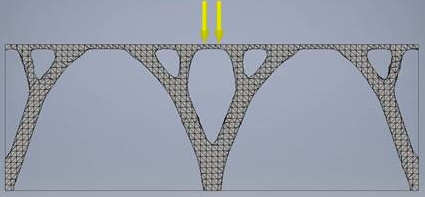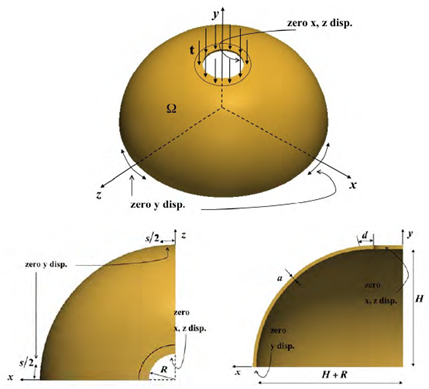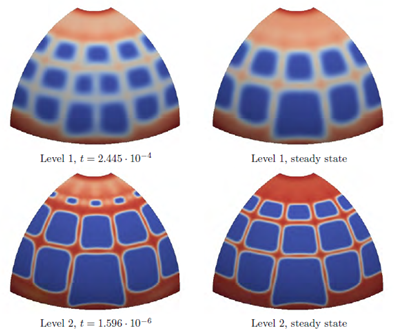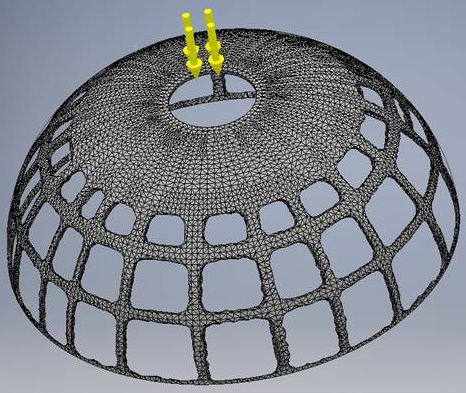This section provides a list of validation problems for Shape Generator. Whenever possible, it is important to compare Shape Generator with known or theoretical solutions to understand where it can be used reliably.
Bridge
In this problem, we aim to determine the support structure required to support a uniformly distributed load acting on an area. As shown in the picture below, there are three fixed constraints on the bottom of the structure [1].

Using Shape Generator, we model this structure as a beam with a uniformly distributed load applied to the top. The three fixed constraints are applied to the bottom of the beam, with one at each end and one at mid-length. The result below agrees well with the published solution. The generated shape takes the form of a bridge deck built on two supporting arches which are able to transmit the compressive pressure load to the fixed constraints.

Hemispherical Shell
In this problem, a thin, hemispherical shell is examined. The shell has a hole opening at the top, around which a pressure load is applied. The y-displacements are fixed on the bottom edge of the hemisphere. The x and z-displacements are fixed around the hole opening on the top of the hemisphere [2].



Using Shape Generator, we are able to reproduce the published result. While much of the generated result agrees with the published results, some noticeable differences occur on the bottom edge of the hemisphere. In the Shape Generator result, only a thin layer of material is remaining where the boundary conditions are applied. The published results show a much thicker band of material around the bottom edge of the hemisphere. The published results also show some variance in thickness of this band of material, likely due to the symmetry boundary conditions used.

References
- Eschenauer, H.A., and Olhoff, N. (2001) "Topology Optimization of Continuum Structures," Journal of Applied Mechanics Reviews. 54(4): 372.
- Dede, L., Borden, M.J., and Hughes, T.J.R. (2012) "Isogeometric Analysis for Topology Optimization with a Phase Field Model," Archives of Computational Methods in Engineering. 19(3): 427-465.